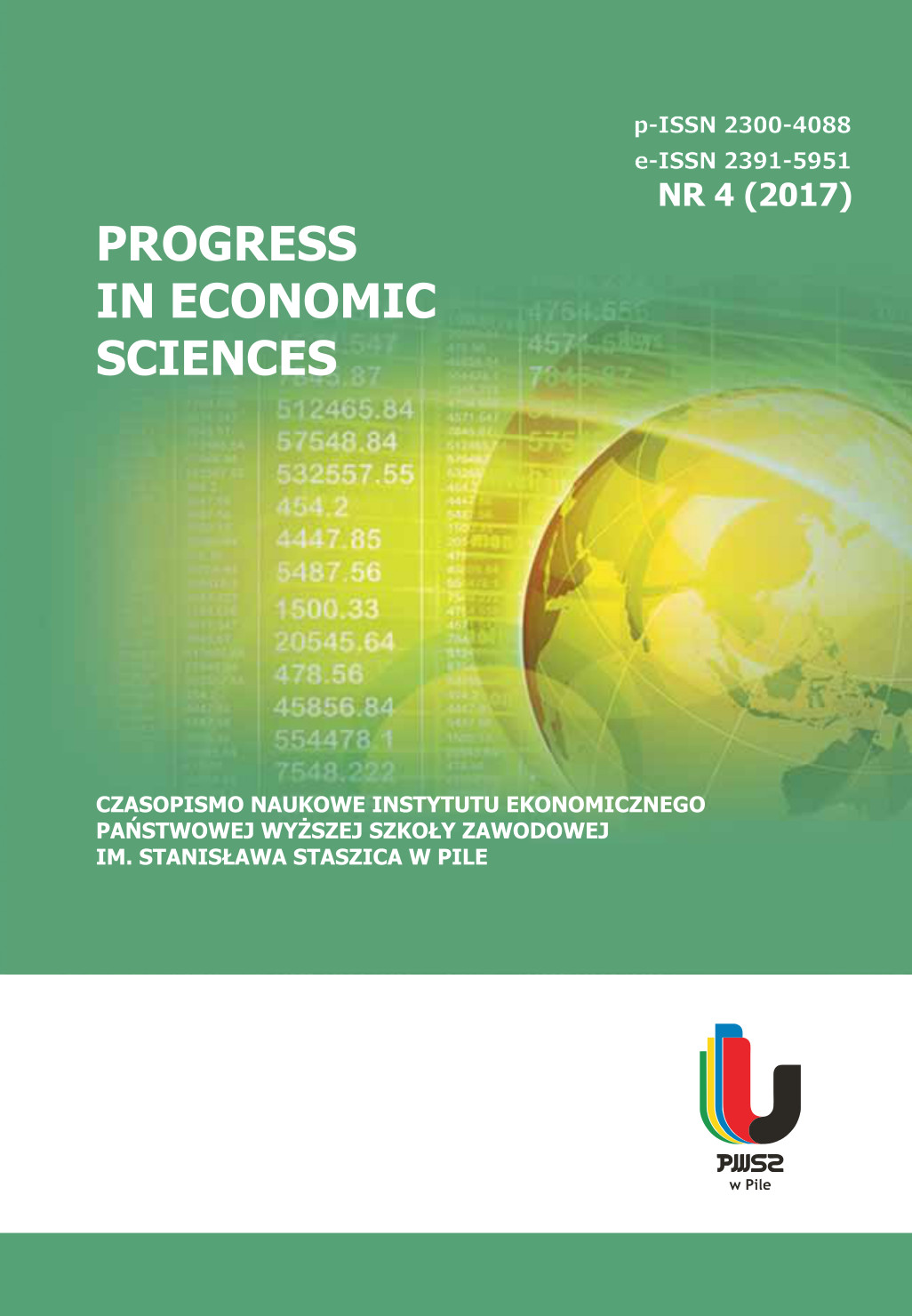Wybór projektu ośrodka przy użyciu programowania kompromisowego
Abstrakt
Wybór obiektu noclegowego i jego lokalizacji jest kwestią bardzo delikatną, ponieważ właściwy wybór ma wpływ na przyszłe operacje i przychody. Podjęcie decyzji bez rozważenia każdego możliwego aspektu tego zagadnienia może prowadzić do nieoczekiwanych rezultatów. Stosuje się metodę wielokryterialnego podejmowania decyzji (ang. multiple criteria decision making, MCDM), ponieważ logiczne podejście do skutecznego rozwiązywania problemów jest nieefektywne. W niniejszym artykule proponuje się zastosowanie programowania kompromisowego do wyboru optymalnego projektu ośrodka dla inwestycji. Zastosowanie tej metodologii ukazano na przykładzie czterech projektów resortów w Bačce, zachodniej Wojwodinie, w Serbii. Zostały one wybrane na podstawie sześciu kryteriów, których wagi są określane przy użyciu metody SWARA.
Bibliografia
AMIRI M., EKHTIARI M., YAZDANI M. (2011), Nadir compromise programming: a model for optimization of multi-objective portfolio problem, Expert Systems with Applications 38(6), 7222–7226.
BILBAO-TEROL A., PÉREZ-GLADISH B., ARENAS-PARRA M., RODRÍGUEZ-URÍA M. V. (2006), Fuzzy compromise programming for portfolio selection, Applied Mathematics and Computation 173(1), 251–264.
BRANS J. P., VINCKE P. (1985), A preference ranking organization method: the PROMETHEE method for MCDM, Management Science 31(6), 647–656.
BRAUERS W.K.M., ZAVADSKAS E. K. (2010), Project management by MULTIMOORA as an instrument for transition economies, Technological and Economic Development of Economy 16(1), 5–24.
CHANG K. L., LIAO S. K., TSENG T. W., LIAO C. Y. (2015), An ANP based TOPSIS approach for Taiwanese service apartment location selection, Asia Pacific Management Review 20(2), 49–55.
CHURCHMAN C.W., ACKOFF R. L. (1954), An approximate measure of value,Journal of the Operations Research Society of America 2(2), 172–187.
DE VITA G., KYAW K. S. (2016), Tourism development and growth, Annals of Tourism Research 60, 23–26.
FATTAHI P., FAYYAZ S. (2010), A compromise programming model to integrated urban water management, Water Resources Management 24(6), 1211–1277.
FISHBURN P. C. (1967), Additive Utilities with Incimplete Product Set: Applications to Priorities and Assignments, Operations Research 15(3), 537–542.
HAJKOWICZ S., HIGGINS A. (2008), A comparison of multiple critria analysis techniques for water resources management, European Journal of Operational Research 184(1), 255–265.
HORWATH H. T. L. (2010), Strategic master plan for areas of the municipalites of Bač, Bački Petrovac and Bačka Palanka, final report, Horwath and Horwath Consulting Zagreb (in Serbian).
HWANG C. L., YOON K. (1981), Multiple Attribute Decision Making Methods and Applications, Springer-Verlag.
KERŠULIENE V., ZAVADSKAS E. K., TURSKIS Z. (2010), Selection of rational dispute resolution method by applying new step-wise weight assessment ratio analysis (SWARA), Journal of Business Economics and Management 11(2), 243–258.
KOMPPULA R. (2014), The role of individual entrepreneurs in the development of competitiveness for a rural tourism destination – A case study, Tourism Management 40, 361–371.
LI R., LEUNG Y. (2011), Multi-objective route planning for dangerous goods using compromise programming, Journal of Geographical Systems 13(3), 249–271.
LIU C. H., TZENG G. H., LEE M. H. (2012), Improving tourism policy implementation–the use of hybrid MCDM models, Tourism Management 33(2), 413–426.
OPRICOVIC S. (1998), Multicriteria optimization of civil engineering systems, Faculty of Civil Engineering, Belgrade (In Serbian).
PRODANOVIC P., SIMONOVIC S. P. (2003), Fuzzy compromise programming for group decision making, IEEE Transactions on Systems, Man, and Cybernetics – Part A: Systems and Humans 33(3), 358–365.
ROY B. (1991), The outranking approach and the foundation of ELECTRE methods, Theory and Decision 31(1), 49–73.
SAATY T. L. (1977), A scaling method for priorities in hierarchical structures, Journal of Mathematical Psychology 15(3), 234–281.
SAATY T. L. (1980), The Analytic Hierarchy Process: planning, priority setting, resource allocation, McGraw-Hill, New York.
SHANNON C. (1948), A mathematical theory of communication, Bell System Technical Journal 27, 379-423, 623–656.
STANUJKIC D., ZAVADSKAS E. K. (2015), A modified weighted sum method based on the decision-maker’s preferred levels of performances, Studies in Informatics and Control 24(4), 461–470.
TSAI W. H., HSU J. L., CHEN C. H., LIN W. R., CHEN S. P. (2010), An integrated approach for selecting corporate social responsibility programs and costs evaluation in the international tourist hotel, International Journal of Hospitality Management 29(3), 385–396.
WU C. C., CHANG N. B. (2004), Corporate optimal production planning with varying environmental costs: a grey compromise programming approach, European Journal of Operational Research 155(1), 68–95.
YU P. L. (1973), A class of solutions for group decision problems, Management Science 19, 936–946.
ZAVADSKAS E. K., KAKLAUSKAS A., SARKA V. (1994), The new method of multicriteria complex proportional assessment of projects, Technological and Economic Development of Economy, 1(3), 131–139.
ZAVADSKAS E. K., TURSKIS Z. (2010), A new Additive Ratio Assessment (ARAS) method in multicriteria decision-making, Technological and Economic Development of Economy 16(2), 159–172.
ZAVADSKAS E. K., TURSKIS J., ANTUCHEVICIENE A., ZAKAREVICIUS A. (2012), Optimization of weighted aggregated sum product assessment, Elektronika ir elektrotechnika 122(6), 3–6.
ZELENY M. (1973), Compromise programming, [in:] Multiple Criteria Decision Making, edited by Cochrane J. L., Zeleny M., University of South Carolina Press, Columbia, SC, 262–301.
ZHANG H., GU C. L., GU L. W., ZHANG Y. (2011), The evaluation of tourism destination competitiveness by TOPSIS & information entropy – a case in the Yangtze River Delta of China, Tourism Management 32(2), 443–451.
ZORAGHI N., AMIRI M., TALEBI G., ZOWGHI M. (2013), A fuzzy MCDM model with objective and subjective weights for evaluating service quality in hotel industries, Journal of Industrial Engineering International 9(1), 1–13.
Artykuły w Progress in Economic Sciences w wersji drukowanej i internetowej publikowane są w oparciu o zasady Open Access na licencji CC - Creative Commons Uznanie autorstwa, autorzy mogą dowolnie dysponować tekstami w wersji opublikowanej w czasopiśmie.


